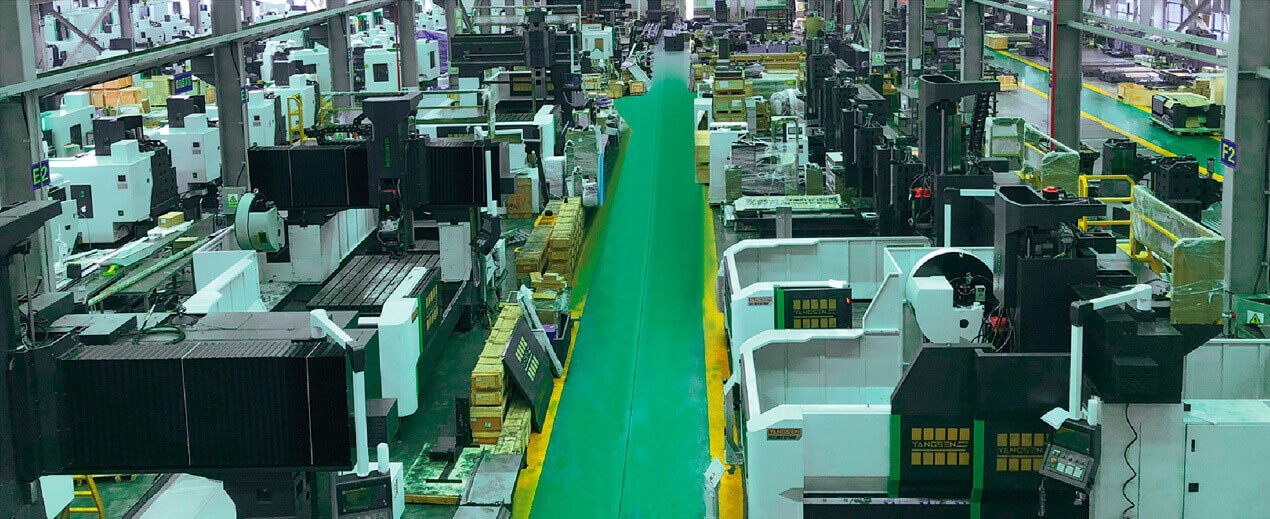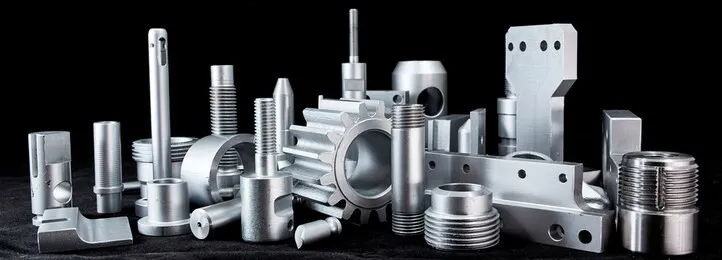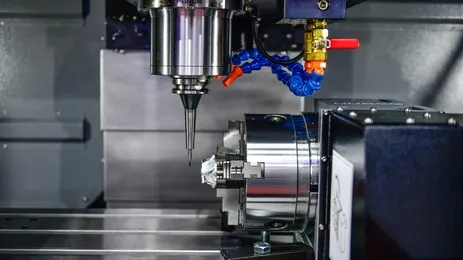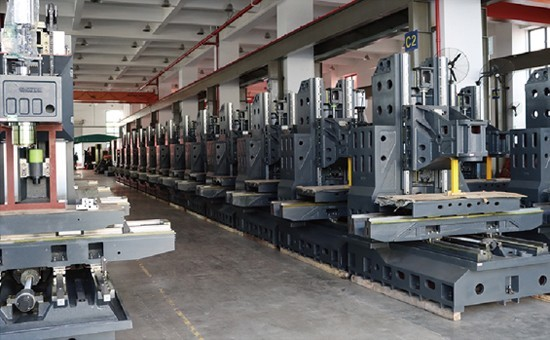Various kinds and functions have benefitted CNC machinery. The CNC machine helps to manufacture products from electronic devices and jewelry to car parts fast and efficiently across industries. CNC equipment has been used on many different types of machines. Most of these machines can be used to make CNC routers. Hobby machines typically only have soft materials such as hardwoods and plastics. There is a variety of advanced tools available to cut hard steel, but getting comfortable is difficult at best.

It can be consolidated in 3 major steps. The first 3D model can be built in the CAD software. Then it converts CAD to CNC software a gcode program then the machine can be built. In the final stages the machine automatically removes material from each working piece thereby forming the customized part.
It is important to consider door clearance when installing CNC machine tools in your shop. Different machines come with different sizes, so make sure you know the size of the machine and its components before starting installation. If you have limited space, look for a way to reconfigure your shop to accommodate the new machinery. Once everything is ready and the doors are opened, the machine should fit perfectly. Make sure to measure twice and cut once when it comes to door clearance! It is also important to consider other factors such as power requirements, air flow needs, and ground conditions.
It is best practice to install a grounding system for your CNC machine tools before you begin installation. This will help protect both you and the machine. Finally, it is important to properly level your CNC machines before use. This ensures that all packages cut will be accurate and have a longer lifespan. Following these tips will help ensure proper installation of CNC machine tools in your shop.
Properly installing a CNC machine tool is essential for ensuring accurate cutting performance and getting the most out of the machine. We want your CNC machine installation to be the next step in improving quality, minimizing expenses and maximizing profits for your job shop. When it comes to installing a new CNC machine tool, proper preparation is essential. Here are five tips for ensuring your installation process goes smoothly and efficiently:
The tool length offset (TLO) should be calibrated before operating any CNC machine. This process can be done manually or automatically, depending on the type of machine you have. When setting TLO, it’s important to measure from the spindle nose to the face of each cutting tool, as this will ensure that proper depth measurements are taken with each cut.
If the TLO is not correctly calibrated, it could lead to inaccurate cuts and potentially costly mistakes. To ensure proper calibration of your CNC machine's TLO, it is essential to follow the machine installation instructions provided by the manufacturer. During the installation process, you will need to measure and input into the CNC machine's control system the distance between cutting tool tip and spindle nose-piece. This number is then stored in memory and used as a reference point when machining future parts.
By following these steps, your CNC milling machine will be correctly calibrated and ready to begin machining. With proper setup and calibration, you can rest assured that your CNC milling machine is operating at its peak performance level. The precision of your CNC machine's cuts will be improved, resulting in higher quality parts and lead to greater customer satisfaction. By taking the time to calibrate your CNC milling machine's TLO, you can ensure that your machining is accurate and consistent for years to come.

Balancing motion parameters such as acceleration, deceleration, and cutting speed is essential for ensuring smooth operation and preventing wear on the machine. This can be done manually through trial and error or with a software program that will automate the process.
The layout of a balance machine's motion parameters will vary depending on the type and model of the machine used. Generally, manufacturers of CNC machining tools prefer to create machines that are designed for precision and accuracy when it comes to motion control, so they often include features like backlash compensation, closed-loop speed control, and more advanced features like contouring and helical interpolation. Depending on the application, manufacturers may also opt to include additional features such as dynamic path compensation or adaptive control.
Knowing how each of these motion parameters affects overall machine performance is critical to ensuring precision and accuracy in CNC machining processes. In addition, understanding what types of machines are best suited for specific applications will help ensure that the right motion parameters are used. By doing so, manufacturers can maximize the performance of their machines and minimize downtime. Ultimately, this helps reduce costs while ensuring quality products are delivered on time.

It’s important to ensure that the tool speeds are set correctly according to the material being cut, as this will reduce wear and tear on both the machine and the cutting tools. The correct spindle speed should also be set for each tool in order to achieve an accurate cut.
To find out the speed of a tool, it is important to consider the material being cut as well as the machine or tool used. For example, when cutting a solid slab with a hydraulic oil-driven machine, the speed of the tool can vary depending on different factors such as: the type of blade and its geometry, depth of cut, feed rate, spindle speed, and type of material being cut. The speed of the tool also depends on the power available from the machine or tool’s motor and how efficiently it is used. When cutting with a high-powered motor, more power can be achieved by increasing the speed of the tool but this can cause excessive wear to blades and cutters. Therefore, it is important to consider the machine’s capabilities before selecting the appropriate tool speed.
Additionally, care must be taken when using different tools for cutting a variety of materials as each material may require different speeds for optimum performance. It is also beneficial to use high-quality lubricants or coolants with any given machine to ensure the best performance. By taking into account all of these factors, it is possible to achieve optimum speeds for the tools being used and ensure their longevity.

One of the most important parts of CNC installation is making sure that linear motion is properly calibrated before operating it; this includes checking backlash compensation, linear guides and bearings. The goal is to make sure the machine’s cutting accuracy is up to par.
When using a new CNC machine, it is important to ensure proper linear motion. This can be achieved by following the G-code instructions, making sure all parts are properly secured and lubricated with oil. It is also essential that the bearings and other components are correctly adjusted in order for the machine to run correctly.
Furthermore, regular maintenance should be performed to ensure that the machine stays in optimal condition. This includes checking for wear and tear, ensuring lubrication levels are maintained and cleaning any dirt or dust from the parts. Proper linear motion is necessary for effective operation of a CNC machine, so following these steps will help keep your new machine running smoothly.

It is important to ensure proper tool maintenance for a CNC machine. During the CNC setup, it is important to check that there is enough clearance between the door and cutting tool. If this clearance isn't checked and maintained, it can lead to damage or improper cuts being made in the material. To maintain proper tool clearance, use a ruler or caliper to measure the distance and then use a wrench to adjust the door as needed.
Additionally, it's important to periodically check that all fasteners are tight and secure and that there is no wear on the cutting tool itself. Doing so helps ensure that everything runs smoothly and that your CNC machine delivers quality results every time. By following these steps, you can help ensure that your CNC machine is well-maintained and running at peak performance. This will help increase the lifespan of your machine and also result in improved efficiency and quality.
It is important to remember that proper maintenance and care of your CNC machine will help ensure it runs at its best for years to come. Investing a little time in regular maintenance and upkeep can save you money in the long run. For more information on how to maintain your CNC machine, consult your user manual or contact a professional.
These are just a few of the key tips for properly installing CNC machine tools; following these steps can help ensure that your machine runs smoothly for many years to come. With proper installation and maintenance, you can get the most out of your CNC machinery and maximize performance in any application.